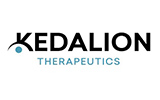
Oil-well cements are used for cementing work in the drilling of oil wells where they are subject to high temperatures and pressures. They usually consist of portland or pozzolanic cement (see below) with special organic retarders to prevent the cement from setting too quickly.
The Oil Well Cement market revenue was xx Million USD in 2016, grew to xx Million USD in 2020, and will reach xx Million USD in 2026, with a CAGR of xx during 2020-2026.
Global Oil Well Cement Market Development Strategy Pre and Post COVID-19, by Corporate Strategy Analysis, Landscape, Type, Application, and Leading 20 Countries covers and analyzes the potential of the global Oil Well Cement industry, providing statistical information about market dynamics, growth factors, major challenges, PEST analysis and market entry strategy Analysis, opportunities and forecasts. The biggest highlight of the report is to provide companies in the industry with a strategic analysis of the impact of COVID-19. At the same time, this report analyzed the market of leading 20 countries and introduce the market potential of these countries.
Major Players in Oil Well Cement market are:
Dangote Group
Bamburi Cement
Holcim
Suez Cement
Italcementi
Dangote Group
Lafarge
Dyckerhoff Ag
Lafarge Cement
Lafarge Cement
Heidelberg Cement
Most important types of Oil Well Cement products covered in this report are:
Ordinary
Moderate Sulfate-Resistant
High Sulfate-Resistant
Most widely used downstream fields of Oil Well Cement market covered in this report are:
Oil Well
Gas Well
Other
Top countries data covered in this report:
United States
Canada
Germany
UK
France
Italy
Spain
Russia
China
Japan
South Korea
Australia
Thailand
Brazil
Argentina
Chile
South Africa
Egypt
UAE
Saudi Arabia
Chapter 1 is the basis of the entire report. In this chapter, we define the market concept and market scope of Oil Well Cement, including product classification, application areas, and the entire report covered area.
Chapter 2 is the core idea of the whole report. In this chapter, we provide a detailed introduction to our research methods and data sources.
Chapter 3 focuses on analyzing the current competitive situation in the Oil Well Cement market and provides basic information, market data, product introductions, etc. of leading companies in the industry. At the same time, Chapter 3 includes the highlighted analysis--Strategies for Company to Deal with the Impact of COVID-19.
Chapter 4 provides breakdown data of different types of products, as well as market forecasts.
Different application fields have different usage and development prospects of products. Therefore, Chapter 5 provides subdivision data of different application fields and market forecasts.
Chapter 6 includes detailed data of major regions of the world, including detailed data of major regions of the world. North America, Asia Pacific, Europe, South America, Middle East and Africa.
Chapters 7-26 focus on the regional market. We have selected the most representative 20 countries from 197 countries in the world and conducted a detailed analysis and overview of the market development of these countries.
Chapter 27 focuses on market qualitative analysis, providing market driving factor analysis, market development constraints, PEST analysis, industry trends under COVID-19, market entry strategy analysis, etc.
Key Points:
Define, describe and forecast Oil Well Cement product market by type, application, end user and region.
Provide enterprise external environment analysis and PEST analysis.
Provide strategies for company to deal with the impact of COVID-19.
Provide market dynamic analysis, including market driving factors, market development constraints.
Provide market entry strategy analysis for new players or players who are ready to enter the market, including market segment definition, client analysis, distribution model, product messaging and positioning, and price strategy analysis.
Keep up with international market trends and provide analysis of the impact of the COVID-19 epidemic on major regions of the world.
Analyze the market opportunities of stakeholders and provide market leaders with details of the competitive landscape.
Years considered for this report:
Historical Years: 2016-2020
Base Year: 2020
Estimated Year: 2021
Forecast Period: 2021-2026
























